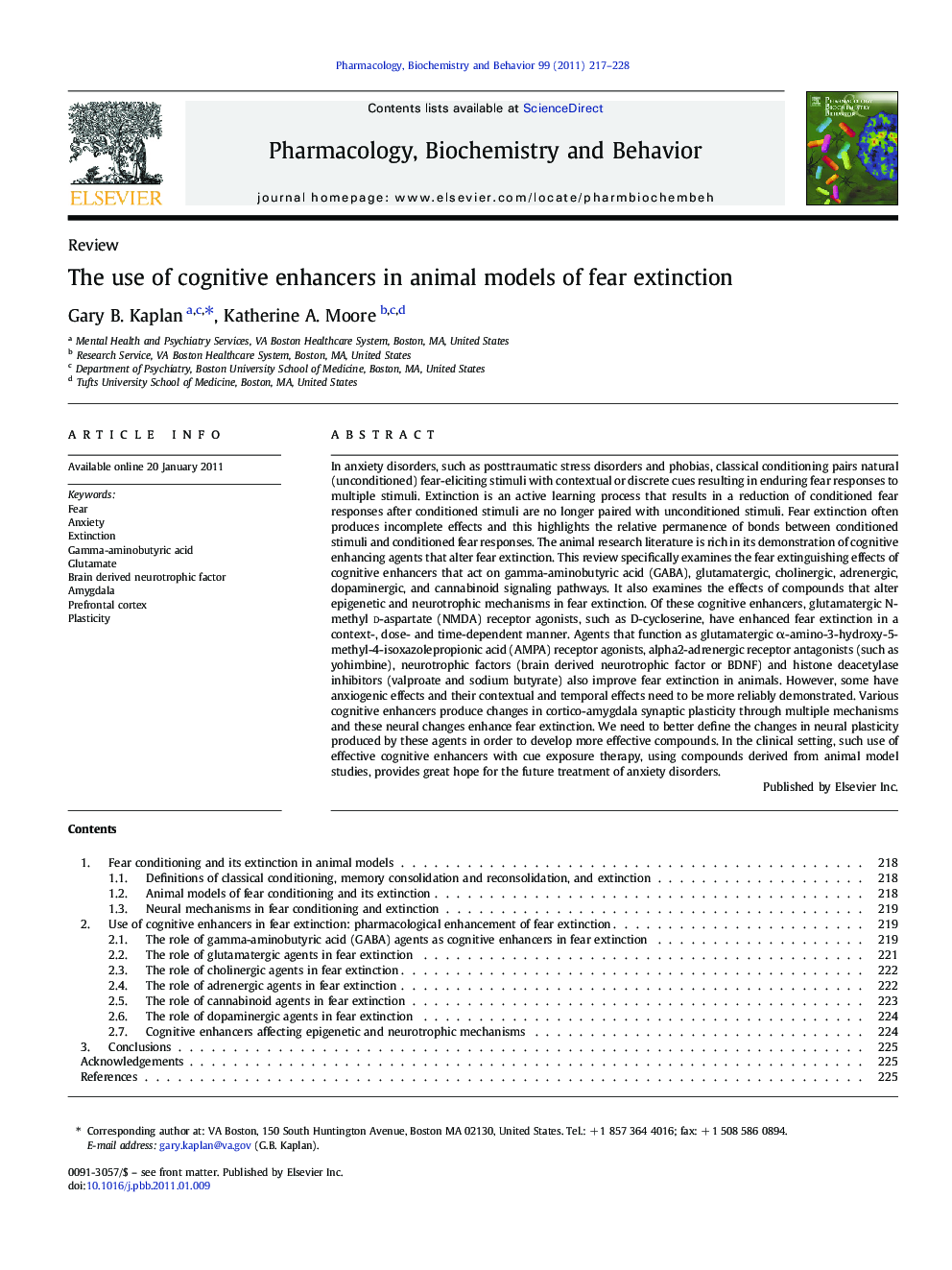| Article ID | Journal | Published Year | Pages | File Type |
|---|---|---|---|---|
| 2013213 | Pharmacology Biochemistry and Behavior | 2011 | 12 Pages |
In anxiety disorders, such as posttraumatic stress disorders and phobias, classical conditioning pairs natural (unconditioned) fear-eliciting stimuli with contextual or discrete cues resulting in enduring fear responses to multiple stimuli. Extinction is an active learning process that results in a reduction of conditioned fear responses after conditioned stimuli are no longer paired with unconditioned stimuli. Fear extinction often produces incomplete effects and this highlights the relative permanence of bonds between conditioned stimuli and conditioned fear responses. The animal research literature is rich in its demonstration of cognitive enhancing agents that alter fear extinction. This review specifically examines the fear extinguishing effects of cognitive enhancers that act on gamma-aminobutyric acid (GABA), glutamatergic, cholinergic, adrenergic, dopaminergic, and cannabinoid signaling pathways. It also examines the effects of compounds that alter epigenetic and neurotrophic mechanisms in fear extinction. Of these cognitive enhancers, glutamatergic N-methyl d-aspartate (NMDA) receptor agonists, such as D-cycloserine, have enhanced fear extinction in a context-, dose- and time-dependent manner. Agents that function as glutamatergic α-amino-3-hydroxy-5-methyl-4-isoxazolepropionic acid (AMPA) receptor agonists, alpha2-adrenergic receptor antagonists (such as yohimbine), neurotrophic factors (brain derived neurotrophic factor or BDNF) and histone deacetylase inhibitors (valproate and sodium butyrate) also improve fear extinction in animals. However, some have anxiogenic effects and their contextual and temporal effects need to be more reliably demonstrated. Various cognitive enhancers produce changes in cortico-amygdala synaptic plasticity through multiple mechanisms and these neural changes enhance fear extinction. We need to better define the changes in neural plasticity produced by these agents in order to develop more effective compounds. In the clinical setting, such use of effective cognitive enhancers with cue exposure therapy, using compounds derived from animal model studies, provides great hope for the future treatment of anxiety disorders.
Research Highlights► Extinction is an active learning process that results in a reduction of conditioned fear. ► Cognitive enhancers may improve fear extinction and can be tested using animal models. ► Glutamatergic NMDA agonists such as D-cycloserine have enhanced fear extinction. ► Cognitive enhancers alter cortico-amygdala synaptic plasticity to enhance fear extinction. ► Using cognitive enhancers with exposure therapy may lessen anxiety in humans.
